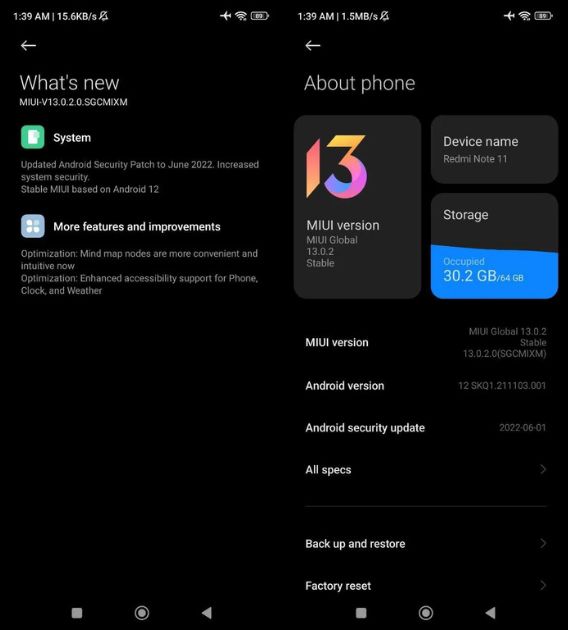Last Updated on June 29, 2022 by Anu Joy
Xiaomi launched the Redmi Note 11 smartphone in India and other global markets back in February. Despite launching it six to seven months after the formal announcement of Android 12, Xiaomi shipped the Redmi Note 11 with Android 11-based MIUI. Now, the brand has finally started rolling out the Android 12 update for the Redmi Note 11. However, the update is available only for a small batch of global users as of now. First spotted by AdimorahBlog, global Redmi Note 11 units are receiving a firmware update with version 13.0.2.0.SGCMIXM.
Redmi Note 11 Android 12 Update!
The Redmi Note 11 Android 12 update also brings with it the latest June 2022 Android security patch and other optimizations. However, it is worth noting that the update is available only in select regions as of now and it is not available in India yet. However, we can expect Xiaomi to roll out the update for Redmi Note 11 units in India in the coming weeks.

Also Read: Xiaomi Redmi Note 11 Review: Misses A Few Notes
Xiaomi Redmi Note 11 Specifications And Features
Subscribe to Onsitego
Get the latest technology news, reviews, and opinions on tech products right into your inboxThe Redmi Note 11 flaunts a 6.43-inch AMOLED display with a Full HD+ resolution, 90Hz refresh rate, and 1,000nits peak brightness. The display panel supports a 180Hz touch sampling rate and houses the front shooter inside a centered punch hole notch.
Powering the Note 11 is an octa-core Qualcomm Snapdragon 680 processor which brings with it an integrated Adreno 610 GPU, LPDDR4X RAM, and UFS 2.2 storage. The smartphone also features a dedicated micro-SD card slot.
The Redmi Note 11 comes equipped with a quad-rear camera setup that includes a 50MP primary shooter, an 8MP ultra-wide-angle lens, a 2MP macro lens, and a 2MP depth sensor. The smartphone gets a 13MP front shooter for video calls and selfies.
The Note 11 is equipped with a 5,000mAh battery unit and 33W Pro fast charging support. It relies on a Type-C port for charging and data transfers. The smartphone also comes with a side-mounted fingerprint scanner that is embedded into the power button.
Do you use a Xiaomi Redmi Note 11 as your daily driver? If yes, have you received the update on your unit? Do let us know down in the comments section.


Discussion about this post